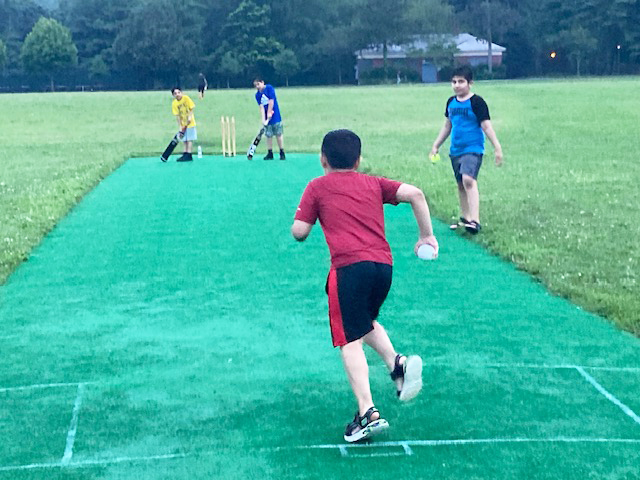
Photo by Síle Moloney
The following story is an extended version of the one that appears in our latest print edition.
News of a planned, 34,000-seat, temporary cricket stadium in Van Cortlandt Park ahead of the Cricket Men’s World Cup in June 2024 shook the Kingsbridge community to its core when The City media outlet published details on July 15 of the as-yet, tentative plan for the venue. However, with New York City Mayor Eric Adams struggling to cope with the ever-increasing costs of handling the influx of migrants to the city, private funding from entities like the International Cricket Council (ICC) for such an event would, no doubt, be considered a welcome investment in New York City’s local economy.
Details of the project remain sketchy and despite sending several requests on July 15 to different City agencies, City Hall, and other impacted entities, Norwood News has yet to see sight of the draft plans other than the black and white rendering attached further below.
Following a flurry of calls, exchanges, and ad hoc meetings between various impacted parties, including members of Bronx Community Board 8 (CB8), elected officials, and others since July 10, at an “emergency” hybrid CB8 meeting on Thursday, July 20, new CB8 chair, Julie Reyes, said a letter about the project proposal had been sent to the mayor from the board on July 18 since the board hadn’t received any information on it.
She said that representatives from the mayor’s office told the board the ICC wanted to engage with the public on the stadium proposal, but because a decision hadn’t yet been made, this was why this had not yet happened.

Photo by Síle Moloney
Reyes said CB8, which covers the Bronx neighborhoods of Fieldston, Kingsbridge, Kingsbridge Heights, Marble Hill, Riverdale, Spuyten Duyvil and Van Cortlandt Village, was also advised that the decision regarding which City would eventually host the Cricket World Cup 2024 had been expected to be announced during the first two weeks of July. “We felt that we needed to meet as soon as possible, rather than wait until September,” Reyes explained, adding that there were a lot of issues that still needed to be discussed around the project.
“The International Cricket Council also advised the mayor’s office that they will be funding, putting the site together…. they will fund it 100 percent and they are going to engage in capital investments in our community long after the stadium is gone, so that the community benefits from the stadium, should Van Cortlandt Park be chosen,” Reyes said. “It’s estimated that an anticipated revenue to the local economy could be up to $150 million or more.”
She went on to say that the ICC was aware of the concerns raised by residents around parking (though not all concerns) should the project go ahead and that the purpose of the special meeting was to allow residents and board members an opportunity to share their feelings on the topic.
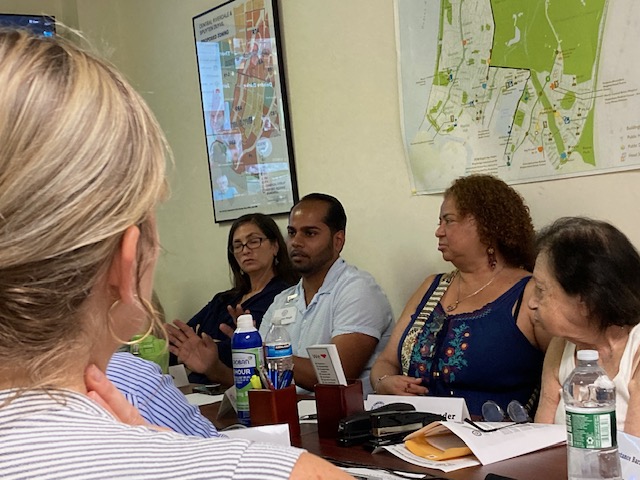
Photo by Síle Moloney
Deb Travis, chair of the board’s parks’ committee, outlined that the board had heard from “the community” that there was a proposal to construct a temporary, 34,000-seat, modular cricket stadium in the southern portion of the Van Cortlandt Park Parade Grounds for the 2024 International Cricket World Cup.
According to Travis, beginning roughly in January 2024, if the project were to go ahead, at least 19.5 acres of the 62-acre Parade Grounds would be closed to the public for construction for a minimum of six months between January and June 2024. “The stadium would be about a 30,000 feet capacity,” Travis said. “The staff for this event is between 4,000 and 6,000 people; that’s the estimate from the presenters.”
She added that it was envisaged to close off the southeast corner of Van Cortlandt Parade Ground from January 2024 until the end of the tournament. “So, there would be some sort of a soft launch in May and then there would be 4 to 6 matches, cricket matches, over the course of June, and then they would spend July removing everything and then packing up,” she said.
Travis said in addition to the stadium, there would be tents comprising a fan zone, food and beverage stands, batting cages, a stage for performances, a broadcast area, and all elements needed for a major sporting event. “And let’s be clear about this: cricket is the number two sport in the world,” she said. “And as much as it’s not the number two sport in the United States, this is a very, very big, popular sport and it’s a very big deal to have this World Cup.”
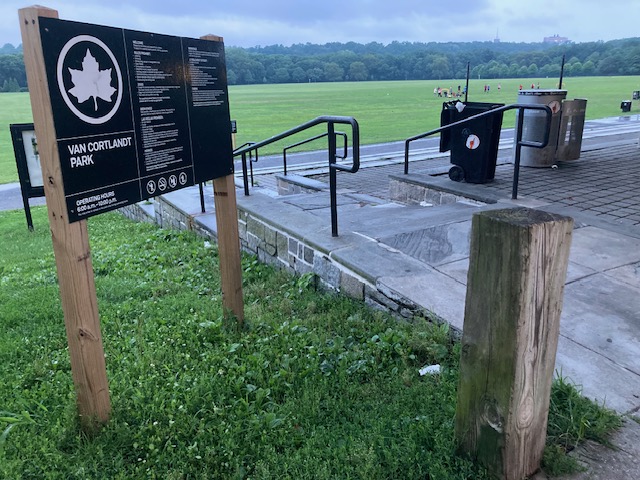
Photo by Síle Moloney
Travis said that at the final of the 2022 Cricket World Cup, there had been 100,000 people in attendance. “We can assume that whatever they’re planning for Van Cortlandt Park won’t be for the final,” she said, before adding that the other games in 2022 averaged between 40,000 and 50,000 attendees. “They were as large as Yankee Stadium,” Travis said. She added that the site itself would have a fence around it, and there would be no public access to the site from January through at least July 2024.
She said the big unknowns were how long it would take to restore the park to its original state, explaining that sod would be placed in the outer field area around a newly installed, rectangular cricket pitch in the center. She said it was also unknown exactly where in Van Cortlandt Park the new pitch would be placed relative to the existing eight cricket pitches, some which are synthetic and some of which are not. She added that it wasn’t planned to construct the temporary stadium near the irrigation project but that her assumption was that given the scale of the project, this could potentially be impacted.
The parks chair went on to say that it was also unknown where the annual Philharmonic concert, which usually draws around 7,000 attendees to Van Cortlandt Park, would be held next year in the event the Cricket World Cup went ahead there. There were similar uncertainties around the Manhattan College invitational, which she said usually draws around 10,000 attendees. In addition, Travis said it was also uncertain how the African Burial Ground and access to the various greenways in the park would be affected by the project. [Read our previous story here on the consecration of, and importance of, the African Burial Ground in Van Cortlandt Park].
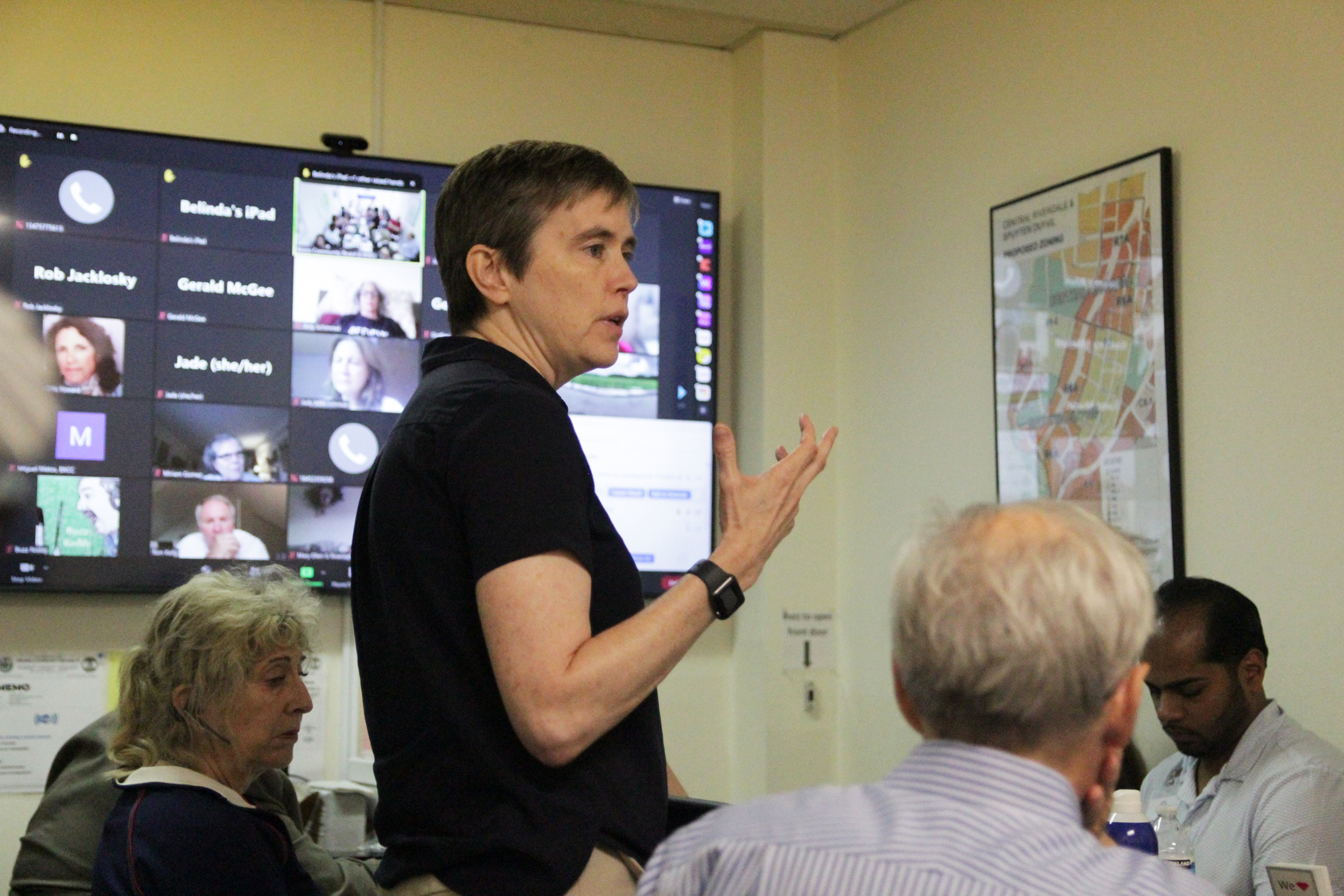
Photo by Síle Moloney
The parks chair also said the project would entail essentially using a public park to host a private event, with tickets for the previous World Cup ranging from $250 to $500 for the final. She also highlighted that Van Cortlandt Park isn’t electrified like Yankee Stadium, and that this was also a consideration. In addition, she placed heavy emphasis on the lengthy nature of the required “alienation” process for the site which includes the preparation of a required Environmental Impact Statement (EIS) which would cover all the impacts of the project on the local area. Thereafter, City and State approval would also be needed.
Opposition to the stadium during the meeting mainly centered around the following concerns: the impact to the local community and businesses in terms of pollution, parking and more, environmental concerns for Van Cortlandt Park itself and for its wildlife, and lack of access to the existing Parade Grounds, not just for local cricketers, but for those playing other sports during the construction phase.
Since the CB8 meeting was held, Bronx Council for Environmental Quality (BCEQ), which was represented at the meeting by Karen Argenti, has written an open letter to New York State officials and the ICC, opposing the construction of the stadium in Van Cortlandt Park. “Parks are for people, not for sale,” they wrote on Aug. 1 in an extract accompanying the letter, signed by Dr. Robert Fanuzzi. “In unity, there is strength. Join us and other community groups by filling out this form and let your voice be heard!”
Meanwhile, local elected officials, Assemblyman Jeffrey Dinowitz (A.D. 81) and District 11 Councilman Eric Dinowitz attended the July 20 meeting, as did Alina Dowe, Bronx borough director for the mayor’s community affairs unit. The United States, Canada, and Mexico will host the 2026 Soccer World Cup and last year, New York City Mayor Eric Adams visited Qatar, the previous host country, to experience first hand its hosting of the tournament. New York and New Jersey are currently pitching to be the host states for the final of that tournament.

Photo by Síle Moloney
Meanwhile, a measured statement was read out over Zoom by a representative of Bronx Borough President Vanessa Gibson during the meeting. It acknowledged the community’s concerns and promised more dialogue. The statement also highlighted the need to be open to new opportunities.
Both elected officials in attendance at the meeting had also released a joint statement on the stadium plans, together with Rep. Ritchie Torres (NY-15), prior to the meeting. Their joint statement included many of the concerns which were raised by Bronx CB8 residents during the meeting. They said they appreciated the mayor’s efforts around the project and saw how meaningful it would be for Van Cortlandt Park to host a World Cup event.
“It is encouraging to see that the ICC and the Adams administration recognize what we, in The Bronx, have known for so long: Van Cortlandt Park is the premier park in NYC,” the politicians wrote in part. They had highlighted the lengthy timeframe needed for the City to obtain approval from the State legislature to “alienate” the parkland. “The State Legislature is not scheduled to reconvene until next year,” they wrote. “In addition, approval of this project may require a ULURP [Uniform Land Use Review Procedure] and an environmental impact statement.”
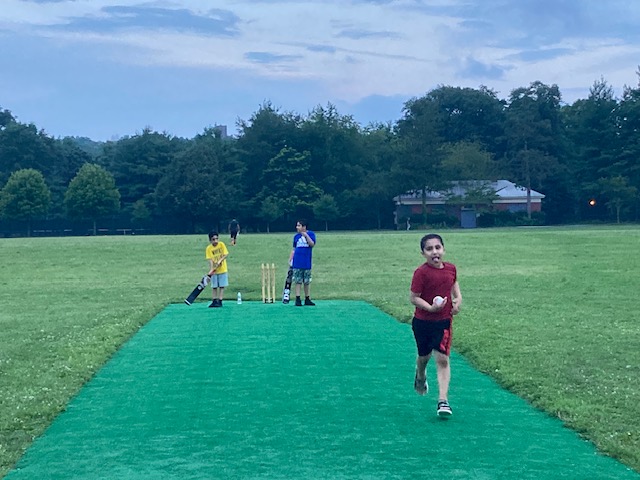
Photo by Síle Moloney
The elected officials also wrote of the likely damage to the Parade Ground and its underlying infrastructure. “The impossibility of ensuring a full restoration and upgrading is concerning,” they wrote, while also referencing the close proximity of the project to, and therefore possible damage to, the Enslaved African Burial Ground, located in the park.
In addition, they raised security concerns, saying their request for more PEP [Parks Enforcement Patrol] officers for the park had been denied despite the issue of ongoing, large-scale parties at the Shandler Recreation Area. They also cited ongoing sanitation issues related in part to these parties and in part to the sheer size of the park.
“Given these existing issues, we have concerns about the City’s ability to address security and quality-of-life concerns for the duration of the tournament and in perpetuity afterward,” they wrote. Many of the same points were reiterated to Norwood News by the assemblyman during a phone call on Monday, July 17, as well as during the CB8 meeting. The assemblyman also suggested Yankee Stadium could be an alternative venue for the event, or other Bronx sports grounds.
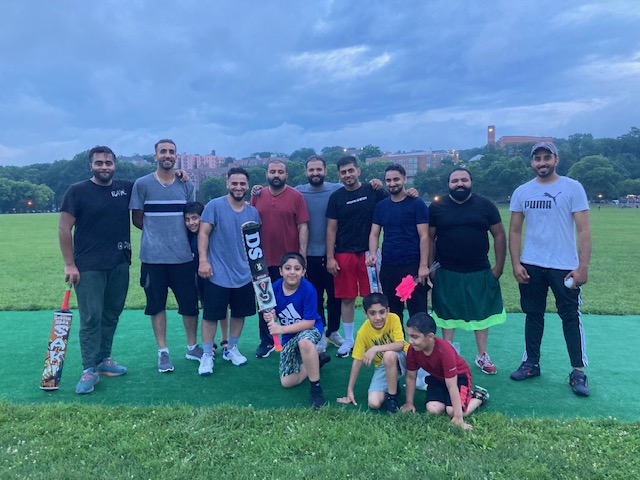
Photo by Síle Moloney
Jefroy Morrishaw is a cricket player with DJ Morrishaw Cricket Club, part of The New York Cricket League, which he said is over 100 years old, and is also a one-time regional director for U.S. Cricket. Morrishaw also attended the July 20th CB8 meeting, though he had apparently not asked beforehand to address the attendees and therefore, did not get a chance to speak. Though he has been involved in cricket administration in New York City since 1985, Morrishaw told Norwood News in a phone call on July 25 that he had not been consulted by anyone on the project.
He provided some background on the existing cricket pitches in Van Cortlandt Park, saying, “Van Cortlandt Park is a ground, to my knowledge, that was willed to the City of New York by an English gentleman who was a cricket fanatic.” Morrishaw said two gentlemen who had been involved in the league, founded in 1919, died, each aged over 100 years old, around ten years ago, and had shared with him much of the history of the ground before they passed away.
He said in the ’80s, other than soccer, there had been few other sports played on the grounds but this had changed over the years. “And New York Cricket League has been struggling to maintain our status there,” Morrishaw explained, adding that originally there were around 12-14 cricket pitches located along Broadway and now they are down to eight “in the back” of the park.
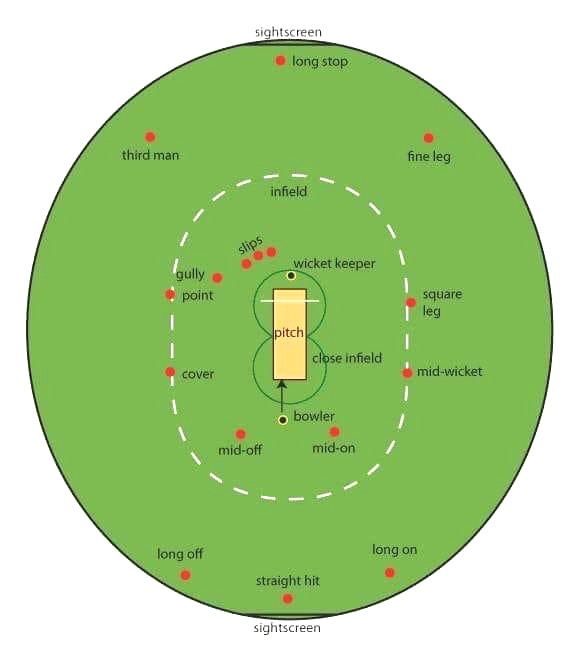
Image courtesy of Jefroy Morrishaw
He said the City Parks’ department advised the cricket league at a certain point that funding had been obtained for the water filtration plant in the park “and the dredging of the river” and that as part of that project, it had been agreed to install some synthetic grass on the pitches. “During my time, they tried to shut down the park to do the repairs,” Morrishaw said. He explained that he met with the Parks’ department at that time and explained to them that to shut down a ground of that size would destroy cricket in The Bronx.
He said Parks asked for his input, and he said the park was big enough to divide into segments and that they eventually agreed to do that, and the cricket pitches and games were later moved around the park while the filtration project went ahead. Morrishaw said that at a certain point in the 2000s, when he moved on from his position with New York Cricket League to a new position as regional director of U.S. Cricket, his successor [in New York City] was not as forceful as he had been in maintaining the status of cricket in Van Cortlandt Park.
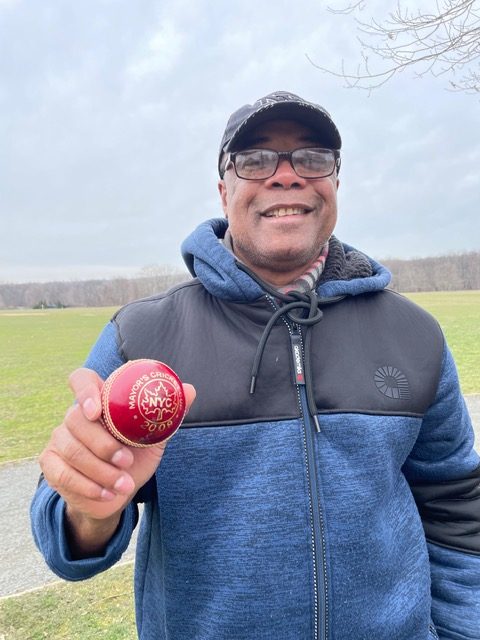
Photo courtesy of Jefroy Morrishaw
He said he was later told on his return to New York that there had been some type of proposal “to zone the park out,” move cricket to the back section where it is now and move the soccer fields to the front by Broadway. “We’re now down to eight pitches and every time we look around, there’s an event and we cannot play our cricket,” Morrishaw said. “That’s been a slap in the face for the last couple of years.”
Norwood News has contacted the City for corroboration of the referenced transfer of the grounds to the City by the referenced English “cricket fanatic” as well as for a comment on what Morrishaw explained regarding the history of the park. We will update this story upon receipt of any feedback.
Morrishaw agreed that the way the project has been handled to date has not been ideal and said he, too, has concerns about the potential damage to the existing cricket grounds and the unavailability of the cricket pitches during any potential construction of a stadium. However, he said, with the right input from the right stakeholders, he believes the project could be a good thing and said compromise was key.
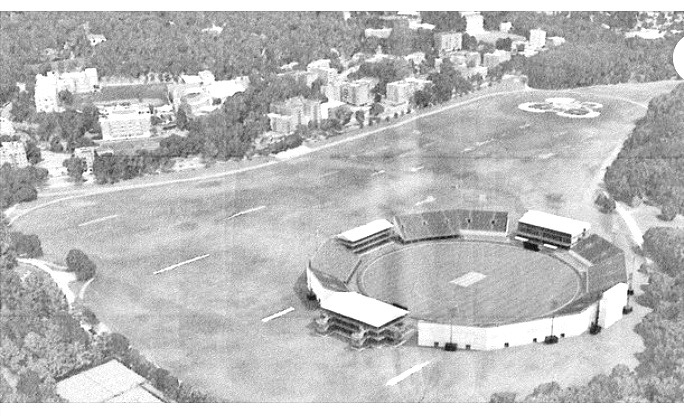
Image courtesy of Jefroy Morrishaw
He told Norwood News, in part, “I respect those individuals that live in that area, and I hear their complaints and their concerns.” He added, “I would want them to understand that if they take the time out and listen to us, the users, the cricketers, we’ve been down this road before where they oppose certain things taking place in that area.” [He later referred to work relating to the water filtration project.]
He continued, “I can say to them it is something good for their community. It might be a little discomfort with the parking and the noise, and all of that stuff for a very short period but for the long term, if we can get some kind of agreement, a confirmation to better the facility, for cricket, it will go a long way [inaudible].”
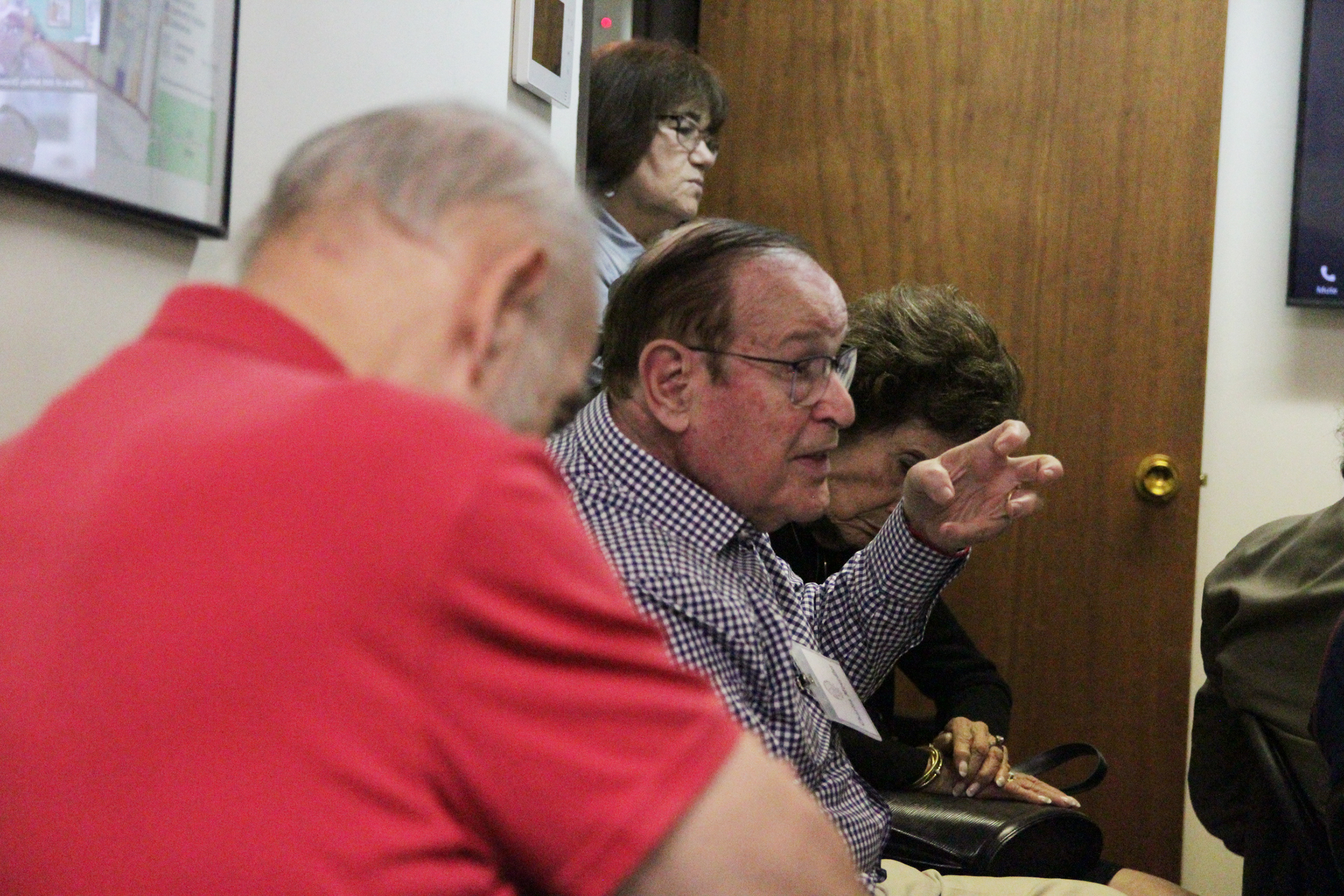
Photo by Síle Moloney
We pressed Morrishaw on the environmental concerns in particular that had been raised by residents, and which obviously have a long-term impact. He said he understood them. “But at the end of the day, something of this magnitude is bigger than us, and it’s an opportunity that I wouldn’t want us to miss because there are many countries out there and other communities who would give up everything to get an event like this in their neighborhood, so we cannot take it lightly when something like this comes around,” he said.
On Saturday, July 15, Norwood News spoke to some cricketers playing in Van Cortlandt Park about their views on the proposed stadium, as other volleyball and soccer players were also playing their respective sports in the park the same day. At that stage, Norwood News had no firm details to share with them other than the proposed size.
Sohail, who grew up in The Bronx and is originally from Pakistan, said, “That would be amazing because when I first came here about 20 odd years ago, there was no ground. I mean, I went to high school here in The Bronx, so I watched them build these pitches and when they first got built, I was very excited.”
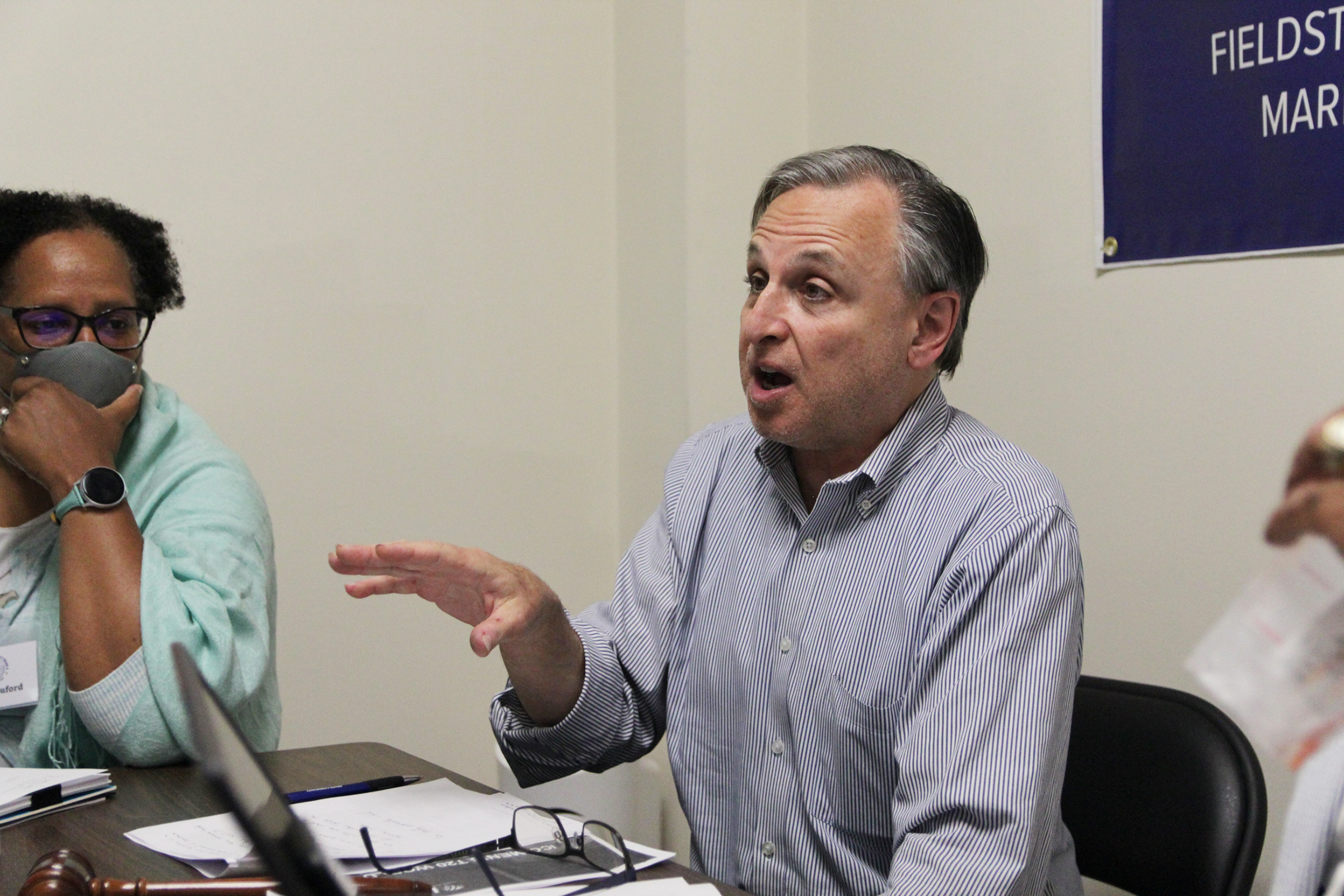
Photo by Síle Moloney
Sohail added, “Hearing that a stadium would be built, I mean, that’d be amazing! Hopefully, they’ll host like international games and stuff like that, so I can see some international players.” Sohail said his group/team, which included some young kids, played around four times a week in the park between 5 p.m. and 7 p.m. “Get some exercise and cardio,” he said. “I mean, it’s fun. We love the game and, you know, it reminds you of the culture.”
Asked how popular the sport was in New York, Sohail said, “We have leagues. On Sundays, every Sunday, games. We have the Commonwealth League it’s called, and the NYC Cricket Club, basically, they host fun games and stuff on Sundays. All these fields are jam-packed on Sundays but we’re usually here from Monday to Friday.”
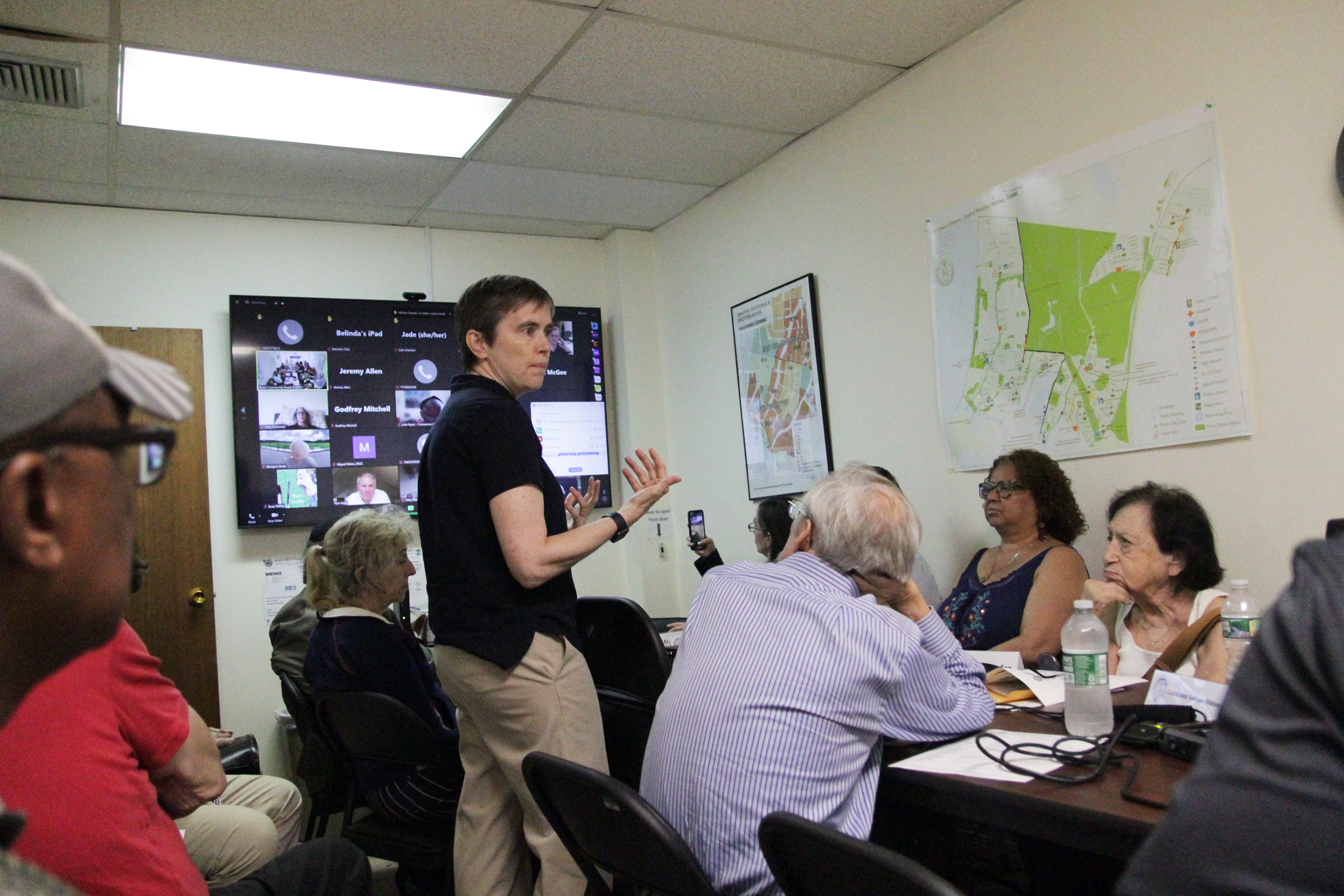
Photo by Síle Moloney
Sohail said there were a few cricket clubs in New York City. “They got the Commonwealth, they got cricket clubs, they have this Premier League. Asked about the make-up of the members and players, Sohail said most were immigrants/expats from Commonwealth countries. Asked if native New Yorkers were also interested or curious. “Oh yeah. They often walk by and they think it’s some sort of baseball,” he said. “I don’t blame them. They’re just intrigued by it. Some of them want to stand by and ask questions. I guess it’s interesting.”
During our conversation with Morrishaw, he added that U.S. cricket teams also come to New York and to The Bronx for interstate games/leagues. He concluded his thoughts on the new stadium, saying, “We [adults] kind of think about ourselves at this stage of the game. I think about the future of our youth, our community, and the game of cricket is the second most popular sport in the world.”
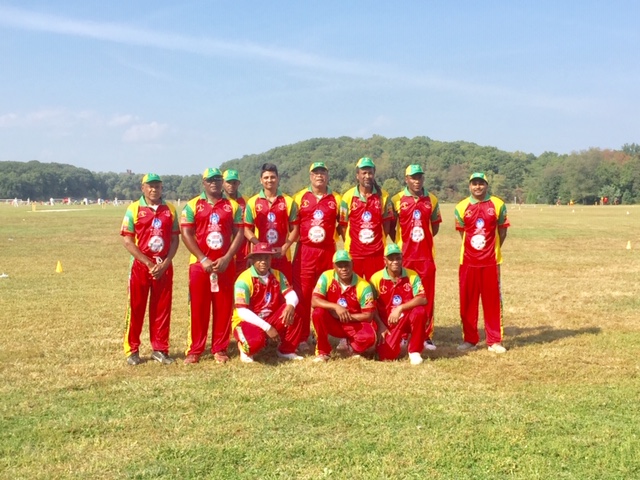
Photo courtesy of Jefroy Morrishaw
He added, “Today, you can make a living from cricket, and you never know which little boy in The Bronx, Brooklyn, or Queens may get an opportunity out of this to go and play at a higher level, and have equilibrium with the football, basketball or baseball players. Cricket is bigger than any of us.”




